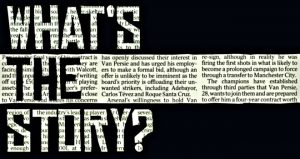 In our work, the focus is not simply on techniques though they are important but also conceptually reframing listening as more than an activity of the passive receiver– or not to put it into the simple communications model of sender message and receiver.
In our work, the focus is not simply on techniques though they are important but also conceptually reframing listening as more than an activity of the passive receiver– or not to put it into the simple communications model of sender message and receiver.
Rather, we understand listening to be a co-created reality and that if we want to be heard, then we need to address the need to speak in such a way that we invite people to listen- so much of our efforts in teams and so on is addressed to selling our ideas or arguing or proving and not to the issue of how do we create a listening culture by the very words we employ and the attitudes we display. Effective story listening will always reveal the power of joining, or identifying in with the speaker, and making someone feel that they are not alone, that they are not isolated in their experience of need, and out of that sharing comes a team, a support network, etc.
So what are the strategies and the underlying ideas that should guide us into a richer communicative competence. Questions of  how do I make it safe for others to speak to me, and how do I win listening rights from others.
how do I make it safe for others to speak to me, and how do I win listening rights from others.
-Referencing
-Naming-
-adopting the “I am not sure” approach- seeing listening as a mutual exploration
-owning one’s own ideas as yours and not as statements from on high
-The use of questions
-adopting the approach of a learner rather than a expert
-Communicating intent
 Listening Skills Summary–The Assumptions Behind our Practice
Listening Skills Summary–The Assumptions Behind our Practice
There are skills that we practice about listening based upon the distinctions we make such as
1-What we think a person has said is not equal to what they actually said so we need to reflect that back in our speaking with phrases such as “What I heard you say was that…” rather than “You said…”Also note- Sometimes what the speaker heard themselves say isn’t what they actually said when you replay the audio tape back to them.
2-What a person says is presumed to be what they mean but that again is a fallacious presumption given that we use words to mean what we want them to mean (as we hear them) but not necessarily the way our hearers hear or use them. So, if we acknowledge this- what you say might not be always what you mean, we need to reflect that back to the talker in phrases such as “What I heard you say was…. and I take that to mean…Am I right. Did I get that right? Is that what you meant?”
3- It is also risky to presume that what people mean is what people feel. A team member can be vociferous on a certain point and we presume that she is passionate about it, but we need to check that out, because how we detect that emotional undertone may not be the way they feel it. That needs to be reflected when we check back in phrases such as “So I am wondering if you feel as strongly  about this as I think you might, going on the tone in your voice?” We need to check out the emotional investment in the exchange so as to know how to respond.
about this as I think you might, going on the tone in your voice?” We need to check out the emotional investment in the exchange so as to know how to respond.
4- We also need to guard about reading minds too readily. Though we may catch what a person says and have reflected back correctly what they mean and what they feel about what they mean, we also need to check out what the point of all that was– in other words, what was the intent behind the sharing, so we might say “So I am taking it that your point here is that we need to …Am I right in that?” This is related to the idea of communicative intent- so that as listeners we get a wider frame of meaning to situate the message. If we are asked to interpret it later when the person is absent, we know the spirit behind the message- the story behind the story- if not the way it is specifically applicable in a new situation. This is also the narrative principle we have called compassionate intention which is to always impute to words and actions a larger broader positive intentionality than they might seem to betray just by themselves. It is saying to the speaker that you make sense in the world, that you are on purpose and not an accident.
5- We also stressed that there is an economy of attention out there. Attention Deficit is not just a disorder but part of an exchange, and part of the media trade in image and celebrity. Just because I am speaking does not guarantee that I am being heard. Listening is an act of generosity and a gift we donate to the speaker. And it always within our power to revoke the listening rights that we give to the speaker. No one can force us to listen. So listening somehow always happens in this glorious field of freedom and grace. To speak to this field of freedom means we have to earn listening rights, just like a movie must win our attention or a book must grab us somehow to get us to read on. That does not mean we have to cultivate all sorts of cheap rheto rical tricks exactly, but to be much more aware that listening is about an economy of attention. There is attention deficit and attention surplus. Note how we say “We pay attention” how true- We have to pay for attention by the way we invite the listener in, and by what we offer them in return. How much we pay for that attention is going to be how much our listeners think we value them. If they feel we are too cheap, they pay us in kind. Quality of listening will often mirror the quality of the effort to earn attention.
rical tricks exactly, but to be much more aware that listening is about an economy of attention. There is attention deficit and attention surplus. Note how we say “We pay attention” how true- We have to pay for attention by the way we invite the listener in, and by what we offer them in return. How much we pay for that attention is going to be how much our listeners think we value them. If they feel we are too cheap, they pay us in kind. Quality of listening will often mirror the quality of the effort to earn attention.
6. Listening is a co-created reality and response– if people are not listening to me, I need to ask where am I speaking to the listening, where am I inviting them into the process? Some conversations that we must hear are never inviting us in, so it is very hard to listen. Not to listen is one of the subtle but most powerful forms of resistance to authority when we feel that we are being taken for granted or not being recognized. We perfected that art, most of us, in 12 years of schooling, the art of “switching off while seeming to be attentive.” The problem of not listening then is no longer just an individual thing. It is a product of group culture and values as well as an individual act. Listening is the way we create and reward relationships. Non-Listening is the way we opt out. We are still listening, mind you-only to something else that has our attention.
7- Thinking of Listening as a set of rights that are given and earned also alerts us to the experience of having our listening rights stolen away from us. We tell a story and instead of our listeners attending to what we said and following on with that recognition through referencing, e.g., “when you said…. I couldn’t help thinking….” We get the usual switch to their story. We are being compelled to surrender our story for theirs, and often it can become a game of who can tell the better story. Once that happens, you know that listening is not taking place. And it makes you wonder if listening-active or passive- is actually a rare experience for many of us. Otherwise how explain how grateful we are when we find a person who can deeply hear us.
8. We also wanted to draw attention to the silent listener to our every conversation and that is “ourselves listening to ourselves.” How we hear ourselves has a dramatic effect on the quality of our speaking and listening. We give a presentation and our inner critic keeps saying-“You stuffed up again- they are laughing at  you.” That inner listening will make it almost impossible to hear what people say in response or it will make us only hear the critical comments.
you.” That inner listening will make it almost impossible to hear what people say in response or it will make us only hear the critical comments.
The paper “Story as the Shape of our Listening” that I have given you discussed the idea that we listen through a story as well as to a story, and how important it is to identify that story. If we think others are not listening to us, often it is because we are not listening to what we are saying or how we are saying it or how it is being interpreted by others. We think that because it sounded right or wrong to us, it must sound right or wrong to our listeners. We refuse to make the imaginative leap into the territory of the other, where words once released are subject to the play of outside interpreters who co-opt our words into their own stories of what makes sense. As one critic said, all communication is mis-communication. The miracle that we hardly recognize is when someone can say back to us genuinely, “Now I understand.
9. If you do a whispering exercise whereby a story is retold in a chain or transmission, one can demonstrate how we take words and phrases and make sense of them as best we can- that we will not pass on let alone be able to remember material that doesn’t make any sense. Try and remember a set of unrelated names compared to remembering 6 different tropical fruits. So we as listeners need to make the compassionate assumption of a communicative ethics that says– even if what you said makes little sense to me as I hear you, I presume that it is making some sense to you. This is where my listening can be directed. I need to ask “How does that make sense for you, so that you can help me understand where you are coming from?” Also we might note what Malcolm Gladwell writes in Tipping Point about rumors and gossip, how stories are leveled, sharpened and assimilated.
LISTENING AS A CLIMATE
In summary, we can consider listening as creating a climate- and whenever we are in groups or working in teams, this climate will determine the quality of the connection between the members since the way we honor people and give them recognition for even existing is how we treat or give recognition to their voice. The use of names and referencing other’s ideas when we speak our own is not just a smart coalition building exercise, it is also a way of humanizing the group culture. This is more than just about people meeting to complete a task. This is People meeting People. It is a human encounter.
As well as a climate of connection, listening also speaks to the quality of attention. Who speaks and who gets heard? Sometimes that may be because bosses play favorites and it also may be that some are more articulate and more effective than others.  Everyone has a responsibility in group process for the quality of attention. If the group allows people to drift off into irrelevancies, or pays little attention to preparation and time, then it is not exercising appropriate care for the quality of attention. It is never a given, it is always paid for, as in “pay attention.” Yet ironically, it is also a gift- the first we give to another human being when we meet them and the first we will withdraw if we feel that we are not being included.
Everyone has a responsibility in group process for the quality of attention. If the group allows people to drift off into irrelevancies, or pays little attention to preparation and time, then it is not exercising appropriate care for the quality of attention. It is never a given, it is always paid for, as in “pay attention.” Yet ironically, it is also a gift- the first we give to another human being when we meet them and the first we will withdraw if we feel that we are not being included.
Lastly, we can usefully speak of listening as a doorway into the climate of intention. Listening is not a blanket skill that covers all- we are listening-yes, but for what exactly? If the goals and the processes are unclear, then the quality of the listening will decline simply because listening is an exercise of focusing, of selective editing in and out. Listening as we have described it will help disclose purpose, and the more purpose becomes clearer, the better the listening becomes.
At bottom, listening is about granting to others the space for their voice by which they can hear that they exist, that they have brains and that they have feelings and that what they do and say makes some sense. It is how we take others into our space. If listening is a problem in a team or a group, it is about relationships and not just skills.
